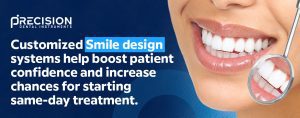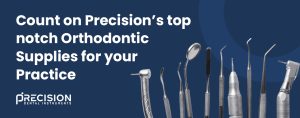Orthodontics Trends for 2023 — Keep Your Practice up to Date
Orthodontists are the only professionals who have the unique ability to give patients a world-class smile that draws attention and makes them feel pleased and secure in themselves. People continuously search for new developments in orthodontics to discover quicker, simpler, and more reasonably priced methods to improve their smiles. When a customer considers orthodontic treatment, improving the time it takes to recover, and the required effort are vital variables.
To provide their patients with a comprehensive range of treatment alternatives, orthodontists need to be current on the most recent developments in the orthodontic profession. You will be able to continue to meet the requirements of your patients and prevent them from looking elsewhere for treatment if you maintain your practice up to date. Because the field of orthodontics is undergoing such fast change, with some emerging developments such as digital imaging and smile planning, temporary anchoring devices, enhanced conventional braces, and Invisalign clear aligners, It is essential to stay abreast of the latest developments in your business to provide your patients with their most prefered method of treatment. Therefore, we collect this list of orthodontic treatment trends and technical developments that have already been applied in the year 2022 and are expected to increase in popularity throughout the year 2023!
The Use Of Temporary Anchorage Devices (TADs)
In the past, orthodontists occasionally used temporary anchoring devices (TADs), titanium miniscrews, in oral operations, and other treatments considered more demanding. However, in recent years, TADs have become considerably more adaptable and orthodontists are now employing them to assist in controlling the total movement of the teeth of their patients. Temporary anchoring devices, also known as TADs, are novel orthodontic treatments that include using a titanium alloy in conjunction with a miniature dental implant that resembles a screw. To facilitate the movement of a patient’s teeth, an orthodontist will attach a TAD to the patient’s jawbone to create an anchor point from which to pull. During orthodontic therapy, these anchors facilitate the movement of teeth in a more rapid, effective, and pain-free manner.
TADs perform exceptionally well when properly attaching a patient’s jawbone to their molars. They are also highly successful at preventing unwanted movement due to the anchoring process. TADs have the additional capability of preventing malocclusions and assisting in the directing of jaw growth in adolescents. TADs are finally removed when the patient has completed their orthodontic treatment.
TADs are unquestionably going to continue to see a rise in demand throughout the next coming years, primarily because incorporating them into a patient’s orthodontic treatment is a relatively straightforward and painless process.Because the jawbone does not contain any pain receptors, TADs do not cause any discomfort to the patient. You will begin by numbing the oral tissue of your patient by using a topical anesthetic on their gums, and then you will implant the TAD.
Completely Customized Smile Design Systems
Several recent technical developments in orthodontics have made smile customization possible, even though the concept of having a smile “customized” can sound a little bit unusual at first.
Through the use of 3D design software, it is now possible for practitioners to create a personalized system for the creation of smiles. The software uses a patient’s facial and dental characteristics to make a digital print of their smile, and then the software program will help offer a better insight into what their smile will look like once treatment has been done.
A patient’s confidence may be significantly increased by utilizing this sort of technology, and it also enables patients to make better-informed choices regarding their orthodontic treatment. We are more than positive that the expanding industry trend towards 3-D software and planning impressions is the right one. This will continue to be very valuable in the future as we tailor braces and metal wires to meet the specific requirements of each patient.
You may generate a 3D model of each patient’s mouth using this piece of software and then tweak it to match the contours of their face and get the look they want. Taking orthodontics to the next level and setting your office apart from others in the industry may be accomplished by ensuring that consumers will be happy with their results before beginning the treatment process.

Making Digital Impressions
The utilization of scanners is another orthodontic development that will continue further into the years. Orthodontists are now much more readily capable of producing individualized orthodontic treatments based upon digital impressions, which is one of the fantastic things about this technology. These digital impression scanners are much easier to operate and offer more patient comfort than the traditional method of taking impressions. Your patient will be much more cooperative and relaxed with the digital impressions.
Therefore, we are confident that the use of digital impressions will continue to increase across the board in the orthodontic sector in the near future.
Invisalign
Invisalign is yet another technique for repositioning teeth and giving patients the stunning smiles they’ve always envisioned but never thought possible. Invisalign employs a series of personalized molds to move teeth into their new and better position gradually. In contrast, conventional braces rely on permanently attached wires to the brackets to pull teeth into alignment.
Patients looking for orthodontic solutions nearly undetectable to other people frequently go for Invisalign because it is a popular option. The clear plastic trays can be taken out of a person’s mouth before they eat or drink, and then they can be put back in when they have finished. This makes the therapy not only practical but also quite convenient. Compared to the typical treatment time for traditional braces, which may range from six months to 18 months, the Invisalign approach is noticeably more practical. They are not significantly more expensive than the traditional metal braces, and many health insurance companies do cover the costs for clear aligners. Another advantage is that they are more comfortable to wear than metal braces.
Because it is adaptable while still producing the desired outcomes in a shorter time, Invisalign is an excellent choice for adolescents and adults who want an undetectable treatment option.
Nickel And Copper-Titanium Wires
When it comes to effectively treating misalignment and bite abnormalities, orthodontists worldwide rely on silver, gold, and stainless steel wires for the majority of their treatment for a significant amount of time. On the other hand, in 2022 and continuing into 2023, many orthodontic specialists opt to use brackets and wires made of nickel and copper-titanium.
The primary reason for this emerging trend in wire material is that nickel and copper-titanium are superior at withstanding all kinds of cold and hot meals when they are in a patient’s mouth. Nickel and copper-titanium are two materials that perform an excellent job of naturally bending and tightening in response to the movement of a patient’s teeth, which is yet another significant advantage of using these two types of alloys.
We anticipate that this wiring trend will continue to gain popularity throughout the coming years. Instead, it will swiftly reduce the number of necessary tightening/adjustment sessions for patients who wear braces in the years to come!
Count on Precision for the most efficient & durable orthodontic supplies!
Orthodontics is a subject that is constantly expanding and evolving due to the introduction of new technology and techniques that are replacing more traditional approaches. Other orthodontic treatments, like Invisalign and ceramic braces, are becoming more popular among patients who don’t want other people to see their dental work; however, traditional metal braces should continue to keep their place as the dominant orthodontic therapy. Through digital imaging and smile planning, an increasing number of orthodontists are getting their patients enthused about the prospect of commencing an orthodontic treatment plan. Who knows where orthodontics will go in the years to come with the light of recent advancements and technological innovations such as Invisalign?
Suppose you want to continue to be ahead of your competition. In that case, you must monitor the most recent developments in orthodontics and keep your finger on the pulse of these changes. By implementing new procedures and technology, you can keep your practice one step ahead of the competition and preserve relationships with your most valuable customers. Contact Precision Dental USA to receive the highest-quality dental supplies and instruments that make your daily treatment adjustments more easy and hassle-free!


